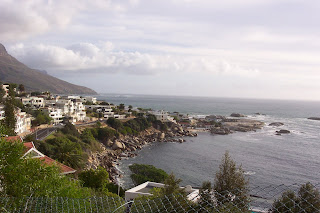To those who shared our most happy day those many years ago, we thank you for being there, and continuing to be in our lives today! To those who weren't able to be there (or weren't born yet!), we wish that you all would have even just one day in your lives that happy and joyous!
To our 6 precious children, their 6 amazing life partners, and our 6 fabulous grandchildren, we would simply say this. When we married, we vowed to each other that we would create a home full of love, first for our family. We are eternally grateful that you all help make that dream come true every single day of our lives.
Here's how you can help us celebrate our 25th anniversary (be patient, it's kind of a long story). Yesterday as we were writing up our experiences at the University for Peace (UPeace) in San Jose, Costa Rica, we wandered around on the website that honors the legacy of Robert Muller (http://robertmuller.org/rm/R1/Home.html). Muller served at the United Nations for 40 years, most of those as Assistant Secretary General. When incredibly serendipitous circumstances moved the UN to establish the University for Peace, Muller was selected to found and develop the institution. Long an admirer of Muller, Dave's intention was to make an interview with him the very first of his sabbatical. Unfortunately, as we were planning our trip to Costa Rica for January 2011, we learned that Muller passed away in September 2010. Off we went to UPeace, anyway, and had a perfectly remarkable experience.
 |
| Bench of Dreams at UPeace |
So how about helping us celebrate our 25th Anniversary today (or whenever you get a minute in the near future), pick up a couple of stones (or pebbles or whatever is at hand), close your eyes, make up a dream for peace, toss one stone back onto the Earth, and take the other one home as a reminder. Then send us an email (dcschwinn@yahoo.com) or a text (517.331.0095) and let us know about your dream! With your permission, we'll make up a blog about 25th Anniversary Dreams for Peace!
Here's another thing we found on the Muller website yesterday that brought it all home for us...what we believe in, what we would dream for the world, how we would wish to live, and how we would like to celebrate our anniversary - with YOU (read to the last line).
 |
| From Robert Muller's "Decide To" Poems |
"I pray that all human beings of this Earth become instruments of peace, thus fulfilling the cosmic function deeply engraved in each of us and for which we were born and allowed to live temporarily on this beautiful planet in the vast universe and eternal stream of time. The peace of the world is the sum-total of the peace of all individuals."
Blessings all and thanks for helping us celebrate!













































